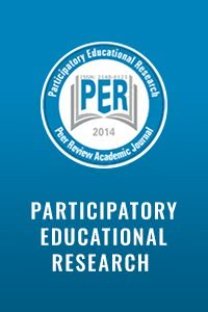Virtual Learning Environments (VLE) and Virtual Classrooms: Edmodo
In our present day, language teaching should not
be limited to classroom environments. Learners should be provided with real and
authentic language learning environments where they can learn language whenever
they want. Therefore, this brings a lifelong learning process. Language
learning should go beyond the walls of the classrooms and it should also take
place everywhere. Depending upon the outcomes of the curriculum, one of the
most effective ways for achieving this goal is the use of “virtual classrooms”
to continue language teaching and learning outside classrooms. The aim of this
presentation is to explain how virtual classrooms can be used to achieve the
outcomes of the curriculum. Edmodo, a web 2.0 software, is one of the examples
of virtual classrooms that provides a free access and application via PCs and
mobile devices. It has been applied at Samsun 19 May University, ELT Dept. at
“Teaching English to Young Learners” and “Teaching Language Skills” courses by
the researcher. Students have been taken part in different applications of
Edmodo not only in classes but also at their houses. Its mobile device
application provides easiness to the students to follow their courses and
assignments and give feedback. Edmodo also gives a chance to the language
teachers to share different information to the students and check their assignments
as an authentic assessment technique. Most of the students have stated that
Edmodo is a really effective language teaching / learning software and it gives
them an opportunity to compensate, review and recycle the courses.
Keywords:
virtual learning environments, Edmodo, lifelong learning e-learning,
___
- Abbad, G. S., Zerbini, T., & Souza, D. B. L. (2010). Panorama das pesquisas em educação a distância no Brasil. Estudos de Psicologia (Natal), 15(3), 291-298. doi:10.1590/S1413-294X2010000300009.
- Aküzüm, C., Baysal, N., Özmen, F. ve Sünkür, M. (2011). Sosyal ağ sitelerinin eğitsel ortamlardaki işlevselliği. 6th International Advanced Technologies Symposium Proceedings. (pp. 42-47). Elazığ, Turkey: Fırat University
- Balasubramanian, K., Jaykumar, V., and Fukey, L. N. (2014). A study on “student preference towards the use of Edmodo as a learning platform to create responsible learning environment”. Procedia - Social and Behavioral Sciences, 144, 416-422. doi: 10.1016/j.sbspro.2014.07.311.
- Eccles, J. S., & Wigfield, A. (2002). Motivational beliefs, values and goals. Annual Review of Psychology, 53, 109-132.
- Edmodo (2014). Secure Social Learning Network for Teachers and Students. (n.d.). Edmodo. Retrieved September 6, 2015, from http://www.edmodo.com
- Edmodo (2016). https://www.edmodo.com/
- Filcher, C., & Miller, G. (2000). Learning strategies for distance education students. Journal of Agricultural Education, 41(1), 60-68. doi:10.5032/jae.2000.01060.
- Gushiken, B. (2013). Integrating Edmodo into a High School Service Club: To Promote Interactive Online Communication. TCC.
- Gülbahar, Y. Kalelioğlu, F. & Madran, Y. (2010). Sosyal ağların eğitim amaçlı kullanımı. XV. Türkiye’de İnternet Konferansı. İTÜ: İstanbul
- Holland, C. and Muilenburg, L. (2011). Supporting student collaboration: Edmodo in the classroom. M. Koehler & P. Mishra (eds.) Proceedings of society for information technology & teacher education international conference (pp. 3232-3236). USA: AACE.
- Huerta-Macias, A. (2002). Chapter 33: Alternative assessment: Responses to commonly asked questions. In J. C. Richards & W. A. Renandya (Eds.), Methodology in language teaching: An anthology of current practice (pp. 338-343). Cambridge: Cambridge University Press.
- Kılıçkaya, F. (2012). Edmodo: Make your language classroom a community. AATSEEL Newsletter,55(1), 7-10.
- Mills, K., & Chandra, V. (2011). Microblogging as a literacy practice for educational communities. Journal of Adolescent & Adult Literacy, 55(1), 35–45.
- Souza, L. F. N. I. (2010). Estratégias de aprendizagem e fatores motivacionais relacionados. Educar em Revista, (36), 95-107. doi:10.1590/S0104-40602010000100008
- Togay, A. Akdur, T.E. Yetişkin, İ.C. & Bilici, A. (2013). Eğitim süreçlerinde sosyal ağların kullanımı: Bir MYO deneyimi. XIV. Akademik Bilişim Konferansı. Antalya, Türkiye: Akdeniz Üniversitesi.
- Tomlinson, B. (1998). Materials development for language teaching. Cambridge: Cambridge University Press.
- Tomlinson, B. (2012). Materials development for language learning and teaching. Language Teaching, 45 (2), 154-179.
- http://whatis.techtarget.com/definition/virtual-learning-environment-VLE-or-managed-learning-environment-MLE)
- http://core-ed.org/legacy/thought-leadership/ten-trends/ten-trends-2013/virtual-learning
- https://www.mackinac.org/14475
- ISSN: 2148-6123
- Yayın Aralığı: Yılda 6 Sayı
- Başlangıç: 2014
- Yayıncı: Özgen KORKMAZ
